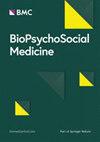Time-dependent complexity characterisation of activity patterns in patients with Chronic Fatigue Syndrome
IF 2.4
4区 医学
Q2 PSYCHIATRY
引用次数: 0
Abstract
Chronic Fatigue Syndrome patients suffer from symptoms that cannot be explained by a single underlying biological cause. It is sometimes claimed that these symptoms are a manifestation of a disrupted autonomic nervous system. Prior works studying this claim from the complex adaptive systems perspective, have observed a lower average complexity of physical activity patterns in chronic fatigue syndrome patients compared to healthy controls. To further study the robustness of such methods, we investigate the within-patient changes in complexity of activity over time. Furthermore, we explore how these changes might be related to changes in patient functioning. We propose an extension of the allometric aggregation method, which characterises the complexity of a physiological signal by quantifying the evolution of its fractal dimension. We use it to investigate the temporal variations in within-patient complexity. To this end, physical activity patterns of 7 patients diagnosed with chronic fatigue syndrome were recorded over a period of 3 weeks. These recordings are accompanied by physicians’ judgements in terms of the patients’ weekly functioning. We report significant within-patient variations in complexity over time. The obtained metrics are shown to depend on the range of timescales for which these are evaluated. We were unable to establish a consistent link between complexity and functioning on a week-by-week basis for the majority of the patients. The considerable within-patient variations of the fractal dimension across scales and time force us to question the utility of previous studies that characterise long-term activity signals using a single static complexity metric. The complexity of a Chronic Fatigue Syndrome patient’s physical activity signal does not suffice to characterise their high-level functioning over time and has limited potential as an objective monitoring metric by itself.慢性疲劳综合征患者活动模式随时间变化的复杂性特征
慢性疲劳综合征患者的症状无法用单一的生物学原因来解释。有时有人声称,这些症状是自律神经系统紊乱的一种表现。之前从复杂适应系统的角度研究这一说法的作品观察到,与健康对照组相比,慢性疲劳综合征患者身体活动模式的平均复杂度较低。为了进一步研究这种方法的稳健性,我们研究了患者体内活动复杂性随时间的变化。此外,我们还探讨了这些变化与患者功能变化之间的关系。我们提出了一种异速聚合法的扩展方法,该方法通过量化分形维度的演变来描述生理信号的复杂性。我们用它来研究病人内部复杂性的时间变化。为此,我们记录了 7 名被诊断为慢性疲劳综合症患者为期 3 周的身体活动模式。这些记录附有医生对患者每周功能的判断。我们报告了患者内部随着时间的推移在复杂性方面的显著变化。所获得的衡量标准取决于评估的时间范围。对于大多数患者来说,我们无法在复杂性和每周功能之间建立一致的联系。患者内部分形维度在不同尺度和时间上的巨大差异迫使我们质疑以往使用单一静态复杂性指标描述长期活动信号的研究的实用性。慢性疲劳综合症患者体力活动信号的复杂性不足以描述他们在一段时间内的高级功能,其本身作为客观监测指标的潜力有限。
本文章由计算机程序翻译,如有差异,请以英文原文为准。
求助全文
约1分钟内获得全文
求助全文
来源期刊

BioPsychoSocial Medicine
Multiple-
CiteScore
3.60
自引率
0.00%
发文量
23
审稿时长
18 weeks
期刊介绍:
BioPsychoSocial Medicine is an open access, peer-reviewed online journal that encompasses all aspects of the interrelationships between the biological, psychological, social, and behavioral factors of health and illness. BioPsychoSocial Medicine is the official journal of the Japanese Society of Psychosomatic Medicine, and publishes research on psychosomatic disorders and diseases that are characterized by objective organic changes and/or functional changes that could be induced, progressed, aggravated, or exacerbated by psychological, social, and/or behavioral factors and their associated psychosomatic treatments.
 求助内容:
求助内容: 应助结果提醒方式:
应助结果提醒方式:


